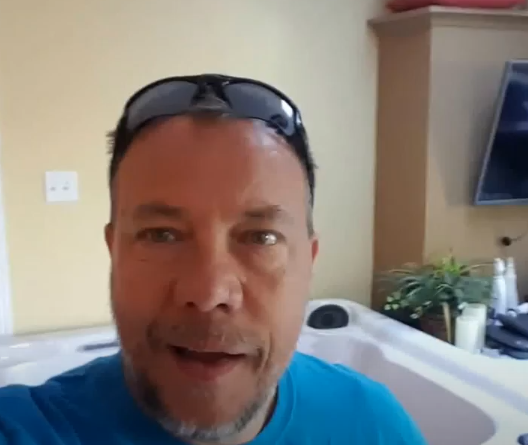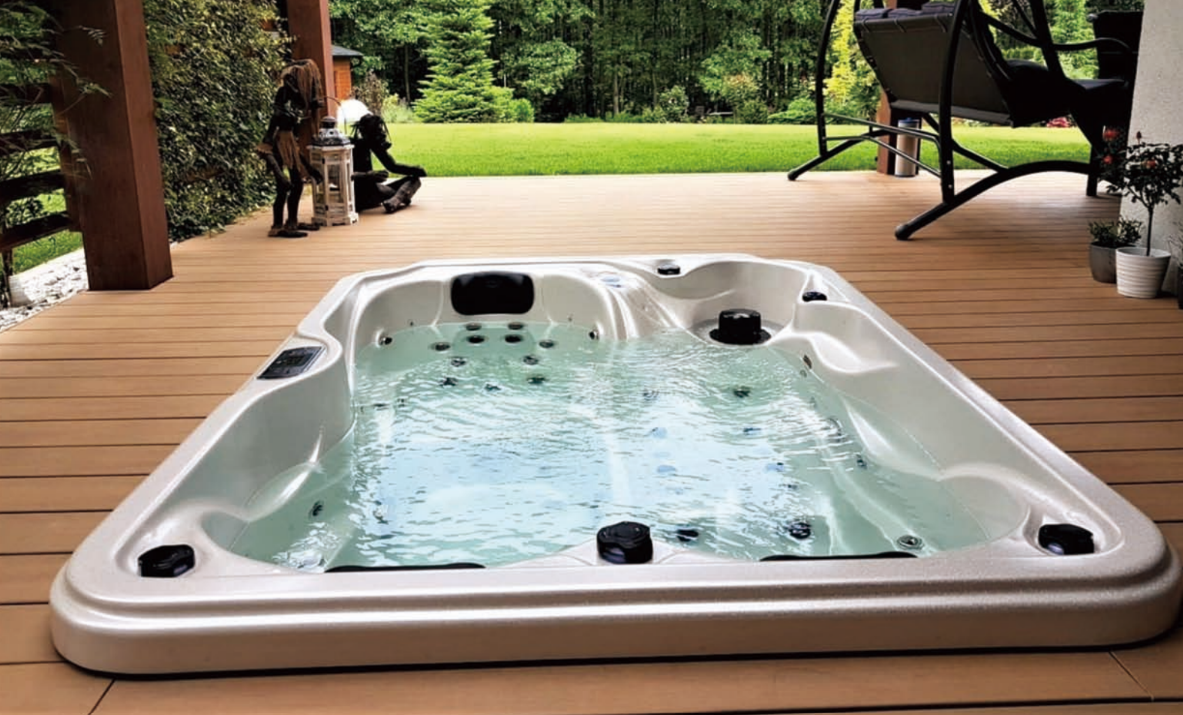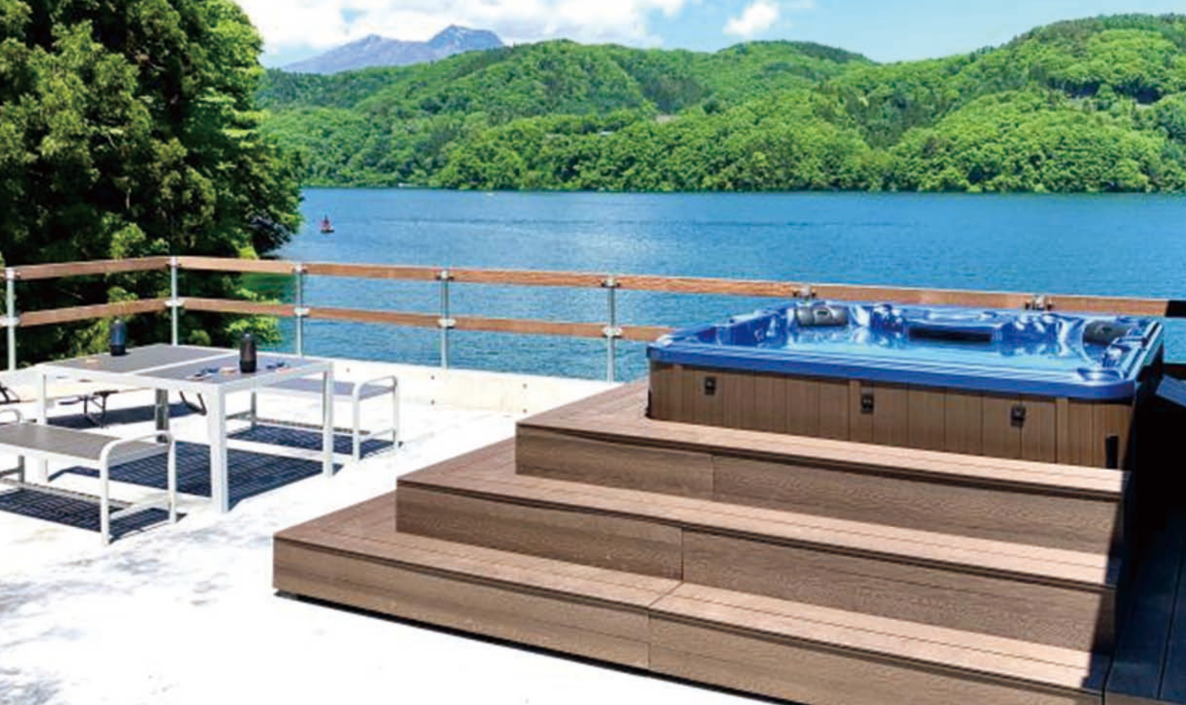In Depth Look At Chlorine Based Sanitizers
Chlorine isn't just chlorine!

How Does Chlorination Work?
Chlorine-based products react with water to produce hypochlorous acid (HOCl) and hypochlorite ions (OCl⁻), which act as disinfectants.
Reaction: Chlorine Compound+H2O→HOCl+OCl−Chlorine Compound + H_2O → HOCl + OCl⁻Chlorine Compound+H2O→HOCl+OCl−
These disinfectants move through the water, targeting pathogens. They disrupt cell membranes, interfere with respiration, and damage DNA, ultimately killing harmful microorganisms. Among these, hypochlorous acid is the more effective disinfectant.
The balance between hypochlorous acid and hypochlorite ions is dictated by water pH:
- Acidic water (lower pH): Produces more hypochlorous acid but may be harsher on skin and eyes.
- Basic water (higher pH): Generates more hypochlorite ions, reducing sanitizer efficacy but being gentler on bathers.
The ideal pH range for hot tubs (7.2–7.8) balances comfort and sanitation. Maintaining this range ensures efficient chlorine use while avoiding unnecessary irritation.
Types of Chlorine-Based Products
Trichlor Tablets
- Chemical Name: Trichloroisocyanuric Acid
- Features: Stabilized chlorine with high available chlorine content, often used in floaters.
- Pros: Slow-dissolving and UV-resistant, making it ideal for outdoor use.
- Cons: Adds cyanuric acid (CYA), which can build up and reduce chlorine effectiveness over time. Not recommended for most modern spas and may void warranties.
Dichlor Granules
- Chemical Name: Sodium Dichloro-s-Triazinetrione
- Features: Quick-dissolving, unstabilized chlorine.
- Pros: Ideal for modern spas, avoids excessive CYA buildup, and maintains free chlorine levels effectively.
- Cons: Requires frequent dosing and monitoring. Adds sodium to the water, though this is usually manageable.
Calcium Hypochlorite
- Features: Granular chlorine often used as a shock treatment.
- Pros: Effective as a potent sanitizer; contributes calcium, which can prevent corrosion.
- Cons: Can lead to scaling if calcium levels become too high. Difficult to dose in small spas.
Liquid Bleach
- Chemical Name: Sodium Hypochlorite
- Features: Common household bleach can serve as a sanitizer.
- Pros: Readily available and inexpensive.
- Cons: Difficult to handle safely in concentrated forms; adds sodium to water, impacting balance.
Saltwater Systems
- Mechanism: Converts salt (sodium chloride) into chlorine via electrolysis.
- Pros: Provides consistent chlorination, reduces chemical fluctuations, and offers convenience.
- Cons: Requires upfront equipment costs and ongoing maintenance. Salt can contribute to water softness but may corrode components over time.
How Much Chlorine Do You Need?
To maintain a sanitized hot tub, a residual chlorine level of 1–3 ppm is recommended. This ensures a sufficient "bank" of free chlorine to combat contaminants.
- Initial Dosing: If the water is clean, adding chlorine to reach the desired residual level is straightforward.
- Post-Use Adjustment: After use, the chlorine demand increases due to organic matter (e.g., oils, sweat) and requires more sanitizer to restore the residual level.
Tip for New Owners: Start with frequent water testing and dose slightly on the higher side. Chlorine levels up to 5 ppm are safe for soaking, providing a buffer against under-sanitization.
What Kind of Chlorine is Right for You?
- For Simplicity: Trichlor tablets work well for older spas or those without manufacturer restrictions.
- For Control and Flexibility: Dichlor granules are ideal for most modern spas, offering better control of CYA levels and compatibility with advanced sanitization systems.
- For Convenience: Saltwater systems are perfect for those prioritizing ease of maintenance, albeit with higher upfront and periodic costs.
- For Shock Treatments: Use calcium hypochlorite sparingly to address water imbalances or as a periodic treatment. I will also use this during initial fills to add a bit of calcium to water that is lacking to prevent leaching.
By understanding the options available and tailoring your sanitizer choice to your spa’s setup and maintenance preferences, you can ensure a clean, safe, and enjoyable hot tub experience.




